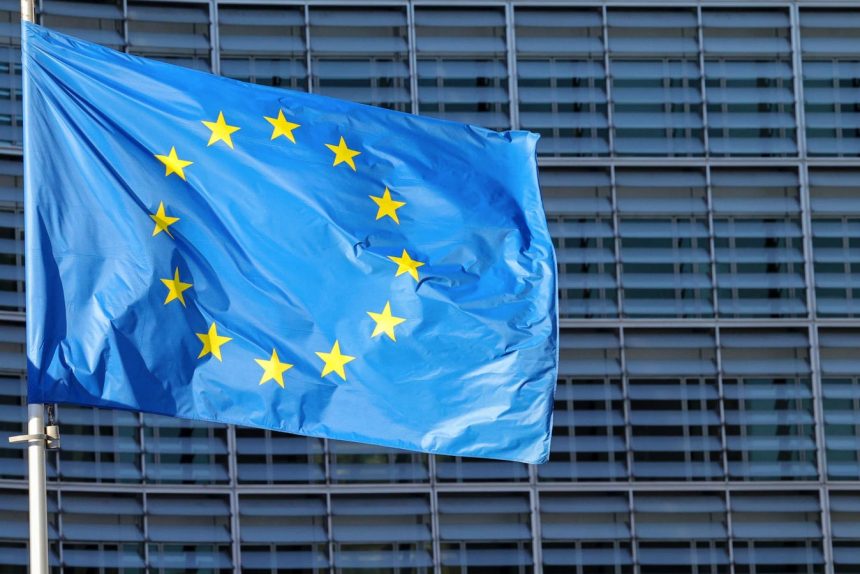The European Union, historically more focused on regulating artificial intelligence than investing in it, is making a significant stride to catch up in the global AI race. Triggered by the emergence of DeepSeek, a Chinese open-source AI model developed at a fraction of the cost of its American counterparts, the EU has announced a $56 million investment to develop its own open-source large language model (LLM). This initiative aims to empower European researchers and leverage the bloc’s existing supercomputing infrastructure to create a multilingual LLM capable of operating in all 30 EU languages. While this funding pales in comparison to the billions invested in leading American AI labs like OpenAI and even European unicorns like Mistral, it represents a tenfold increase over DeepSeek’s reported training costs, signaling the EU’s renewed commitment to competing in the AI arena. The project’s central goal is to provide European companies and governments with an open-source AI foundation built on EU values, fostering innovation and customization while adhering to ethical guidelines. This initiative marks a pivotal shift in the EU’s approach, transitioning from a primarily regulatory stance to a more proactive investment strategy in the rapidly evolving field of AI.
The EU’s investment, while modest compared to the vast sums flowing into American AI ventures, carries significant strategic weight. The project’s emphasis on open-source development contrasts sharply with the closed-off nature of prominent American AI models. This open-source approach allows for greater transparency, adaptability, and customization, enabling European developers to tailor the LLM to specific needs and applications. Furthermore, building an LLM grounded in EU values addresses growing concerns about data privacy, ethical considerations, and potential biases embedded within AI systems. This initiative promises to provide European entities with a reliable and aligned AI foundation, fostering innovation within the framework of the EU’s regulatory landscape. By fostering a robust European AI ecosystem, the EU seeks to reduce dependence on external AI providers and ensure that its values are central to the development and deployment of this transformative technology.
The decision to invest in a homegrown LLM is driven by several factors, including the restrictive practices of American tech giants. Meta, OpenAI, and others have limited or blocked access to their AI tools in Europe due to legal uncertainties surrounding the EU’s AI Act, which aims to regulate “high-risk” AI applications and is set to take effect soon. This cautious approach from American companies has fueled concerns that Europe could fall further behind in the global AI race. Prominent figures like Mark Zuckerberg and Daniel Ek have warned that excessive regulation could stifle innovation and hinder European competitiveness. The EU’s investment in an open-source LLM can be seen as a direct response to these challenges, seeking to create a viable alternative that complies with European regulations while fostering innovation within the bloc.
Beyond addressing immediate regulatory hurdles, the EU’s investment aims to cultivate a thriving European AI ecosystem. By supporting the development of an open-source LLM, the EU empowers its researchers, businesses, and governments to build tailored AI solutions that cater to specific European needs and priorities. This strategic move promotes self-sufficiency and reduces reliance on external AI providers, safeguarding against potential disruptions and data privacy concerns. The project also aligns with broader EU initiatives aimed at bolstering the European tech sector. Increased research grants, investments in supercomputing infrastructure, and growth-focused strategies all contribute to creating a more favorable environment for AI development and adoption within the EU.
Despite the potential benefits, the EU’s investment has drawn comparisons to a previous, unsuccessful attempt to create a European search engine to rival Google. Critics argue that public funding might be better directed towards supporting existing private ventures rather than duplicating efforts. Some observers express skepticism about the project’s ability to compete with well-funded American rivals, suggesting that the relatively modest investment might be insufficient to make a significant impact in the fiercely competitive AI landscape. These concerns raise questions about the effectiveness of public funding in driving innovation, particularly in sectors dominated by private investment.
However, proponents of the initiative emphasize its strategic importance in asserting European autonomy in the AI domain. They argue that fostering a homegrown, open-source LLM is crucial for ensuring that European values and regulatory principles are embedded within this transformative technology. The project’s focus on multilingualism also addresses a unique European need, enabling the development of AI applications that cater to the diverse linguistic landscape of the EU. Furthermore, the open-source nature of the project encourages collaboration and knowledge sharing, potentially accelerating innovation and fostering a more dynamic European AI ecosystem. Ultimately, the success of this initiative will depend on several factors, including the ability to attract and retain top talent, effectively leverage existing infrastructure, and navigate the complex interplay between regulation and innovation. The EU’s commitment to fostering a vibrant and ethically aligned AI ecosystem will be crucial in determining whether this investment can truly propel Europe to the forefront of the global AI race.



